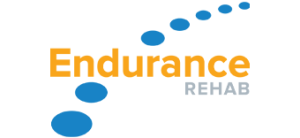FIBROMYALGIA AND EXERCISE
FIBROMYALGIA AND EXERCISE
By Nathan Snell, PT, CSCS
Fibromyalgia is a disorder that causes pain in your muscles, joints and overall fatigue. People diagnosed with fibromyalgia have specific tender points on the body. These tender points are painful with applied pressure and typically found on specific places on the neck, shoulder, back, hips, arms and legs. Individuals diagnosed with fibromyalgia may also suffer from poor sleep, headaches, morning stiffness, numbness/tingling, problems with concentration and memory. Fibromyalgia affects as many as 1 in 50 Amercians and occurs more commonly in women than in men. The causes of Fibromyalgia are unknown.
Managing Fibromyalgia becomes a lifestyle change. There are a number of things you can do to help yourself feel better. These things include; exercise proper sleep habits, healthy diet, taking prescribed medications, and activity modification (keep the stress to a minimum).
Literature suggests that light, regular exercise can be very beneficial. Regular exercise may improve sleep and provide an outlet for stress. When considering an exercise program you want start easy to allow the body to adapt to the new stressors of exercise – the key is to not overdue it!! Here are some ideas:
Stretching: Gently stretch all your major muscle groups. Hold each stretch for 20 – 30 seconds and repeat each 2 times.
Aerobic Activity: Walking is a great place to start. Start easy 5 minutes on flat terrain. Slowly add 2-5 minutes daily until you can walk comfortably for 60 minutes. Once you build up to 60 minutes walk 3-4 times a week.
Aquatic exercise is great too! Get in the pool and walk forwards, backwards, side-to-side. Do squats in the shallow end. Grab a noodle to do a skiing motion with your legs, scissor or bicycle with your legs. Hold onto a kick board and just kick. You can purchase aquatic dumbbells and an aqua jogger at your local sporting goods store. The options are endless!! Start slowly – the water acts as resistance and set a timer, it’s easy to get carried away in the pool. Start with ten minutes the first day and perform every other day for a week and then add 5 minutes the next week.
Indoor Cycling: Start with 10 minutes at low resistance, add 5 minutes each session. Slightly increase your resistance once you can do 30 minutes continuously on the bike.
Other activities:
Yoga: try a beginner yoga class or one that focuses on relaxation and meditation. Again, start slow, try one class (30 minutes or less) and slowly build by completing a full class or adding a class a week.
T’ai Chi or Qigong Both of these activities focus on energy and quality of movement. Performing these activities require complete concentration and focus.
A few words of caution:
Always start slowly!! It’s important to allow yourself a day or two recovery when first starting out. It will permit you to evaluate how you’re feeling and how your body responded to the activity. Listen to your body.
Another thing to keep in mind is the temperature of the environment you are exercising in. Extreme temperatures should be avoided. Extremes can cause an exacerbation of the fibromyalgia. In the summer stay indoors for exercise, use the pool at the gym – it’s typically heated between 89-90 degrees. In the winter, exercise in warmer part of the day and cover up from the sun. Avoid excessive sun exposure.
Diet and exercise go hand-in-hand. Eat well! Avoid a lot of processed foods. Become a label reader. A nutritional label is on almost everything in the grocery store. Try to have healthy snacks (fruits, vegetables, yogurt etc…) on hand. Eat 5 small/ well balanced meals a day. Kicking caffeine may help too.
Keep a journal. Keeping a journal may help you determine patterns and pin point what causes your fibromyalgia to flare up. This will help you and your physician determine what treatments are best for you. Write down the number of hours you slept, rate your stress level (use a 0 – 10 scale), how well you ate, your mood (smiley faces work here), how much exercise you tolerated and how you felt after.
Lastly, find a good physician!! If you’re not getting what you need from your physician, find another one. The best way is to ask around – word of mouth works best. A team approach may be beneficial (i.e. a rheumatologist and a natropath). Also, it’s a good idea for you to keep a copy of any tests or treatments performed. This will help when seeing a new physician. Be informed!
Find what works for you and stick with it!!!!!




Leave a Reply
Want to join the discussion?Feel free to contribute!